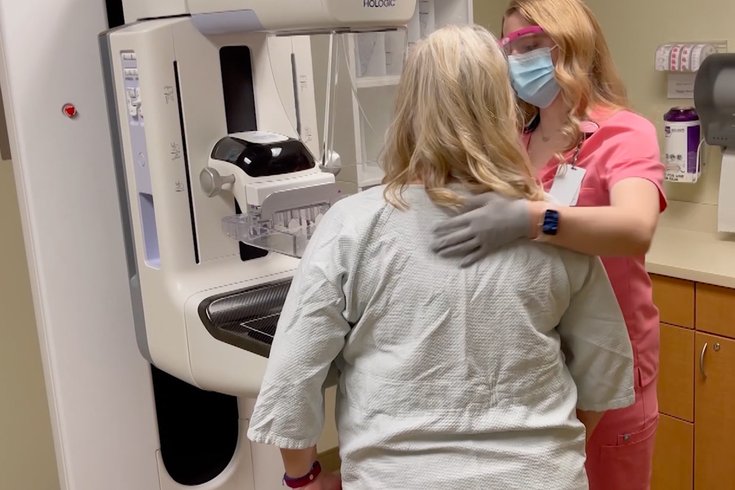
October 18, 2023
 Provided Image/Ohio State University
Provided Image/Ohio State University
More than 9 in 10 adults recognize a lump is a common symptom of breast cancer, a survey conducted by Ohio State University shows. But there are the lesser-known symptoms, including retracted nipples, breast puckering and sick thickening on the breast.
It's widely known that a new lump is the most common symptom of breast cancer.
Unsurprisingly, a survey conducted by Ohio State University found that 93% of adults recognize a lump as a breast cancer symptom. But most breast cancers do not begin with a noticeable lump, and the survey also revealed a critical knowledge gap about the other symptoms of breast cancer.
Only 1 in 2 adults – or fewer, in some cases – recognized the following breast cancer symptoms:
• A retracted, inverted or downward-pointing nipple
• Breast puckering – an indentation that occurs when one's arm is raised
• Loss of feeling in the breast
• Thickening of breast skin• Nipple discharge
People experiencing these symptoms are advised to see a doctor. Not everyone with breast cancer has the same symptoms – and sometimes they don't have any at all, according to the U.S. Centers for Disease Control and Prevention. Plus, these symptoms may be caused by other medical conditions.
The survey also revealed some confusion regarding breast cancer screening guidelines. A third of women – particularly those under age 30 – expressed uncertainty about screening recommendations.
Women of average risk should begin receiving mammograms every two years, according to new guidelines from the U.S. Preventive Services Task Force, though many medical organizations support annual mammograms.
Dr. Ashley Pariser, a breast medical oncologist at OSU's Comprehensive Cancer Center, said early detection is key, and advised people need to seek medical attention as soon as they notice any changes.
"Screening mammography is our No. 1 defense in detecting and addressing breast cancers at their earliest, most treatable stages, Pariser said. "But it is also very important for people to be familiar with the look and feel of their breast tissue so that sometimes subtle changes can be evaluated quickly to give us the best chance at early detection."
For people with dense breast tissue, close monitoring is essential due to a slightly elevated cancer risk. Dense tissue can mask small tumors. Moreover, Black and Ashkenazi Jewish individuals are advised to talk with their doctors about more intensive screenings because they are at higher risk.
Men also can develop breast cancer, though it is rare. About 1 in 100 breast cancer cases in the United States are diagnosed in men, according to the CDC. The two most common types in men are invasive ductal carcinoma, in which cancer cells start in the ducts and may spread, and ductal carcinoma in situ, in which the cancer stays within the lining of the ducts.
Various risk factors can increase a man's likelihood of developing breast cancer, including age (most cases occur after 50), genetic mutations (like BRCA1 and BRCA2), a family history of breast cancer, past radiation therapy, hormone therapy treatment, liver disease, obesity and conditions affecting the testicles.
"Although the disease is less common in men, 1% of breast cancers occur in men," Pariser said. "These cancers typically present as nipple changes, so it is also important that men feel empowered to seek medical attention for concerning symptoms, especially if they have a strong family history of breast cancer."
The American Cancer Society estimates there will be nearly 300,000 new breast cancer cases diagnosed in women this year, and 43,700 deaths. Breast cancer is the second-most common form of cancer among women, after skin cancer. It accounts for 1 in 3 cancer diagnoses in women.